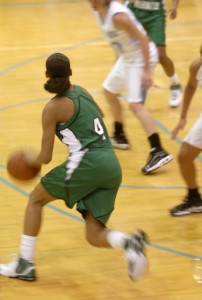As a sports medicine professional and physical therapist working with lots of athletes after ACL surgery, I am always looking for ways to improve post-op rehab and prevent a subsequent ACL injury. While we have lots of research looking at neuromuscular, genetic, sex and morphologic risk factors, we have not been able to make significant progress in injury reduction. So many athletes suffer the dreaded “pop” making a simple athletic maneuver they have done a thousand times before.
Based on nearly 19 years of experience training and rehabbing athletes from youth to professionals, I see strong links to a genetic predisposition (family history and prior injury) as well as concerns over neural fatigue. We already know the age of injury is a significant as research indicates those tearing at a younger age (around 20-21 y/o) are more likely to suffer a second injury. But what we know less about is the impact of ankle biomechanics (namely limited dorsiflexion) and how proximal weakness in the hip affects injury risk.
The latter topic was the focus of a study just published in the current edition of the American Journal of Sports Medicine. In this prospective study, researchers sought to determine if baseline hip strength can predict future non-contact ACL tears in athletes.
The study included 501 (138 female and 363 male) athletes from competitive clubs at the University of Isfahan in Iran who participated in futsal, soccer, volleyball, basketball and handball. Athletes with any lower extremity injury in the last 6 months or history of any knee surgery were excluded. The participants were followed for 1 year between June 2011 and July 2012.
Before the start of the season, isometric hip strength (external rotation and hip abduction) were measured bilaterally with a hand held dynamometer. Injured athletes were classified based on injury mechanism, non-contact versus contact. After the season, logistic regression as used to determine whether baseline hip strength predicted future non-conatct ACL injury.
Results
- There were 15 total non-contact injuries (6 female and 9 male) = 3% incidence for males and 4.3% for females
- Baseline measures for both hip external rotation and abduction strength were significantly lower in injured athletes compared to uninjured ones
- Separate regressions indicate that implied hip strength increased future risk with external rotation strength odds ratio of 1.23 and hip abduction strength odds ratio of 1.12
- Clinical cutoffs to define risk were established as ER strength less than or equal to 20.3% of bodyweight or abduction strength less than or equal to 35.4% bodyweight
Some limitations in this study that bear noting are:
- Researchers relied on participants via interview to determine injury mechanism (contact v. non-contact)
- Hand held dynamometer measurements and cutoffs are not appropriate for other instruments
- Injury risk is multi-factorial and as such hip strength results may overestimate or underestimate impact of the hip strength as predictor of future injury
- The researchers selected only a single cutoff marker (high v. low risk) and did not include a moderate risk group
- Exclusion criteria prevented those who underwent a prior knee surgery from participating in the study, including those with prior ACLR, which suggests the findings may underestimate the effect of impaired hip strength on injury risk in said group
Key takeaways
Based on this paper, measures of preseason isometric hip abduction and external rotation strength independently predicted future non-contact ACL injury in competitive athletes. This study suggests that it would be helpful to such measures as part of a screening exam/process for those participating in such sports.
It is important to note that this paper’s logistical models only explained 10-11% of the variation i injury status, thereby indicating that there are a multitude of factors that influence injury risk including sex, anatomical variation, and neuromuscular function to name a few. Some factors are modifiable and others are not. With that said, hip strength is one important factor we must be aware of in terms of assessment and looking at injury prevention.
I would further add that looking qualitatively at closed chain hip stability and single limb frontal plane control with dynamic eccentric movements is critical to help evaluate and classify poor movement patterns in our athletes. I routinely screen jump landings, single leg squats, single leg RDLs and single leg sticks to provide a conclusive picture of how the athlete can control bodyweight. As we continue to look to build a better injury prevention and rehab model, looking at hip strength should be a part of the process we use to help ensure optimal outcomes and quantify risk levels.
Reference
Khayambashi K, Ghoddosi N, Straub RK, Powers CM. Hip muscle strength predicts noncontact anterior cruciate ligament injury in male and female athletes. Am J Sports Med. 2016;44(2):355-361.


